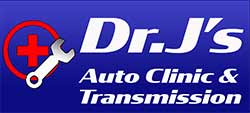Cooling System
Your radiator protects your engine and air conditioning condenser from overheating. It also plays an important role with the computer controlled system. An engine temperature sensor actually tells the computer what the engine temperature is so the computer can adjust the air and fuel mixture and engine timing. The efficiency of the radiator directly effects the efficiency of your engine.
That’s why flushing the cooling system and pH balancing the coolant is recommended at least once every two years.
Our coolant system power flush removes contaminates. We pressure test the cooling system for leaks, clean the recovery bottle and pressure test the radiator cap. The system is then refilled with the proper mix of coolant and water to reach the -35 degrees for winter protection.

Be Careful Removing
The Radiator Cap!
The radiator’s heat and pressure build up to dangerous levels when a car is running. Serious injury can come from removing the cap from a hot engine. If too much pressure has built up, removing the cap can send boiling water and steam up and out in all directions. Allowing the car to sit for around 30 minutes will ensure the pressure and temperature has dropped to a safe level before you attempt to remove the radiator cap. Most caps have a clear warning label on the outside of the cap itself warning about this important step.
We’re often asked questions about the cooling system – the system that cools your engine and keeps it at the proper operating temperature. Let’s examine the topic in two areas: first the coolant itself and, second, the parts that make up the cooling system.
The coolant in your car or light truck is the mix of water and antifreeze that circulates through the engine to draw off heat. First, you need to have the proper amount. If you don’t have enough coolant it can’t keep your engine cool.
You also need the right kind of coolant. Different makes of sedans and other vehicles require different coolant formulation to protect against corrosion.
Finally, your coolant needs to be fresh. Over time and miles, the anti-corrosion additives in the coolant are depleted and the coolant can actually start to eat away at the cooling system parts. Your owner’s manual and our service adviser can help you with the recommended coolant replacement schedule and make sure you’re getting the right type of coolant.
Now let’s talk about the cooling system components. These will all eventually wear out and need to be replaced.
Starting with the radiator, we see them coming into the shop with leaks or clogged with deposits. Depending on the damage, we will clean, repair or replace. We also see radiator pressure caps that can no longer hold the proper pressure. We recommend replacing pressure caps when you change your coolant to avoid this problem.
We see leaky water pumps and hoses in our area that need to be replaced, too.There’s also a part called the thermostat that opens and closes to regulate the flow of coolant. Sometimes they stick open or closed and the cooling system won’t work properly.
Engine damage from overheating can be very expensive to fix so it’s important to maintain your cooling system properly with scheduled coolant replacement and periodic inspections of the cooling system. Certainly come in if you suspect a leak and have us take a look.
DID YOU KNOW?
The water pump’s like the heart of your cooling system, circulating the fluid throughout. It’s a small pump that’s driven by the engine: usually by belt, but sometimes by a chain or gear. The water pump only operates when the engine’s running. Some start failing at around 40,000 miles, but most fail by 100,000 miles. Consult your owners’ manual or your local shop to see what’s recommended. Since a water pump either works or it doesn’t, you need to change it when it fails. Water pumps fail in one of two ways: the bearings fail or they begin to leak. It’s possible to have a leak from a cracked water pump, but it usually leaks at the gasket where it attaches to the engine. For a cooling system inspection, GIVE US A CALL!
